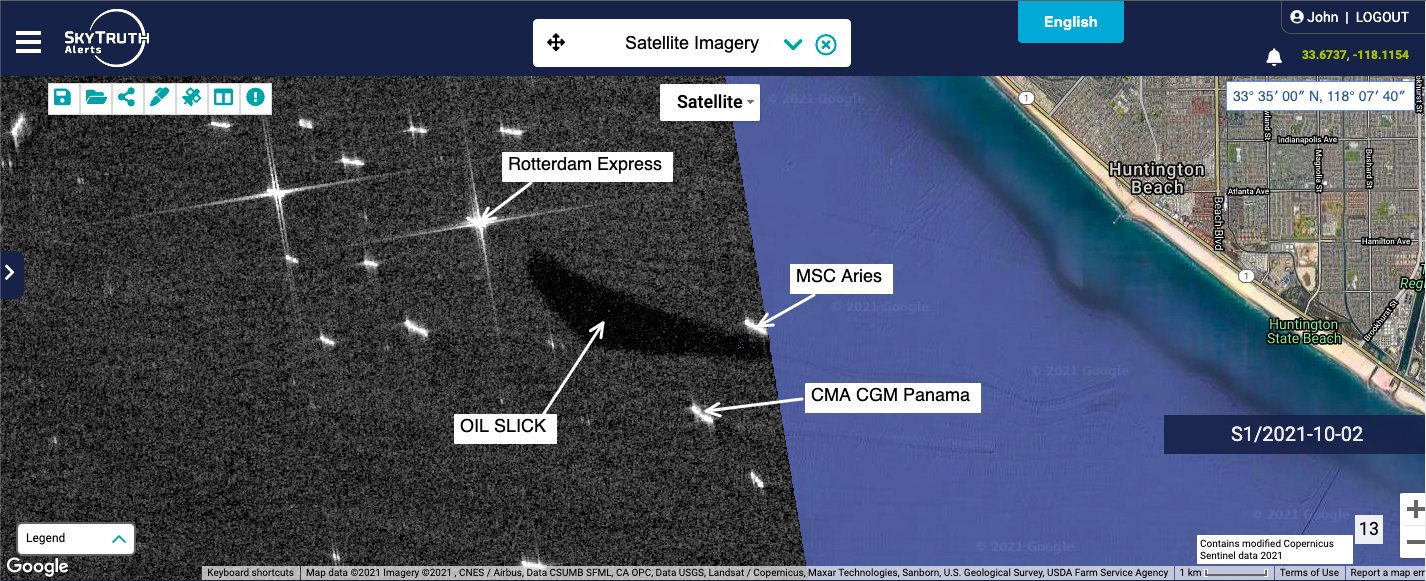Decarbon Daily - California Oil Spill & Renewables M&A
Inside this issue
California Oil Spill - More Transparency Needed
Amplify Energy owns and operates the pipeline that spilled 126,000 gallons along 6 miles of the California coast, from Newport Beach to Huntington Beach.
To date, the largest spill from offshore operations in California was the 1969 80,000 barrel (~336,000 gallons) Santa Barbara spill. After the 1969 event, state and local officials worked closely with oil and gas operators to reduce the risk offshore oil spills.
The 2021 oil spill story is still developing; however Amplify has sent a remotely operated vehicle to investigate the spill. There is also other speculation about the source and cause of the spill. The map on the left below shows the pipeline from the Beta Pump Station to the offshore platforms. The map on the right is the number of vessels waiting offshore.

Skytruth is monitoring the situation with satellite imagery to detect the size and scope of the spill. According to Skytruth, the first observation of the spill was on Friday evening and the first public report of the spill was Saturday morning.

Increasing Transparency
A 2003 study title Oil and Gas Operations Offshore California: Status, Risks, and Safety by Michael D. McCrary, David E. Panzer, and Mark O. Pierson cites the ongoing regulations and cooperatives that are required for platform inspection, pipeline inspections, and oil spill response plans.
The Pacific OCS Region also conducts an offshore pipeline inspection program that includes several types of regular inspections. Operators are required to conduct weekly inspections by boat or aircraft of the ocean surface along the pipeline route for leakage. The records of these inspections must be submitted
annually to the MMS.
Increasing public transparency is key. With weekly reporting requirements, these reports should be made available on a weekly or monthly basis. An annual report does nothing to improve public trust and awareness.
Unannounced, partial production and drilling inspections of every offshore facility in the Region are conducted once per quarter, in addition to thorough annual inspections of each facility. Three or four times per year, the MMS also conducts intensive, multi-day inspections, known as focused facility inspections (FFIs), rotating among the offshore facilities.
Third-party inspections that are publicly reported would demonstrate the regulators and oil & gas operators efforts to protect the environment while producing offshore. The organizations are doing a disservice to their companies, shareholders, and community by not disclosing their environmental efforts on a frequent basis.
Spill Response
The BSEE provides oil spill response support with tools for companies and the public.
The Bureau investigates Spills ≥ 50 Barrels incidents, petroleum or other toxic substance spills of 50 bbl (2,100 gal) or more, describing the circumstances surrounding the incident with the ultimate goal of prevention through safety alerts in addition to site specific corrections. Most incidents involve everyday operations and duties, but an unsafe act or condition may cause a spill to occur. By providing brief descriptions of each pollution incident, the Bureau is trying to prevent similar incidents from occurring in the future.
The BSEE Spills Archive shows only a few other only spills for the Pacific Region from 1964 to 2006.
Inside this Issue
♻️ Adani Green Acquires SB Energy, India's Largest Renewables M&A Deal
🛢 Earthstone Energy (ESTE) Acquires Assets in Midland Basin for $73.2M In Cash and Stock
💦 Metacon Acquires 100% of the Electrolysis Company Water2H2 AB
🔋 CATL Acquires Mineral Resources Company Millennial Lithium
🏭 Olympic Steel Acquires Shaw Stainless & Alloy
⛽️ Enbridge Advances U.S. Gulf Coast: Acquires North America’s Premier Crude Export Facility
Articles in this issue